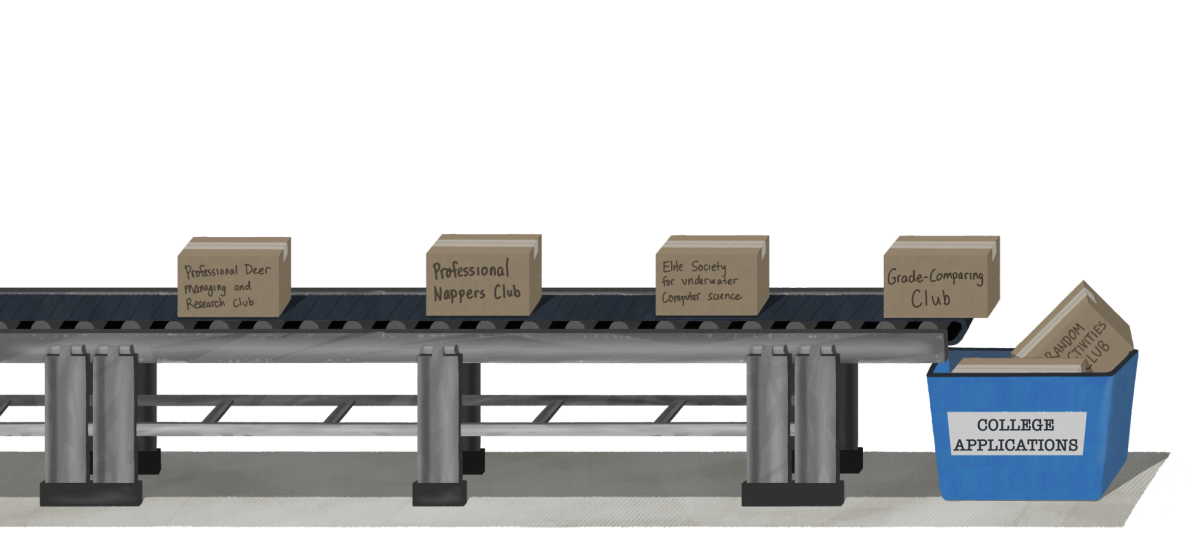Written by Carolyn Kuimelis
School is a place for emotional as well as academic learning, and schools should take steps to open up the conversation about sexual health to ensure that their students are equipped with the knowledge and means to practice life-long skills such as safe sex. Having condoms readily available to students is a necessary and effective way of ensuring that teenagers are making healthy, safe decisions. A condom availability program would open up the conversation about sexual health, eliminating the stigma associated with condoms and contraception.
Living Skills, a semester-long required course, includes one unit on sexual education. Students are taught about the different forms of contraception and how to put on a condom, but the course fails to provide students with the means to practice safe sex. According to the Guttmacher Institute, the average age for teens to become sexually active is 17. Therefore, the best time to educate teens on safe sex is in their first years of high school. Students who take the course past freshman year may not find the information as relevant as it would have been had they taken it earlier.
Abstinence may be the only form of contraception that is 100 percent effective, but schools must acknowledge that, despite that, many students are engaging in sexual activities. According to the Center of Disease Control and Prevention, 59 percent of teenagers are sexually active. Without easy access to contraception, many teens are at risk for unwanted pregnancies and sexually transmitted diseases (STDs), some of which are deadly if left untreated. In fact, according to the American Sexual Health Association, half of all newly occurring STDs in 2000 occurred among youth ages 15 to 24. The best way to encourage students to make responsible decisions about their sexual health is to offer condoms for free and provide instruction on how to use them.
With condom distribution programs comes the question of how easily accessible these condoms should be. In many schools, parents can opt in or out of condom availability programs. Some schools have mandatory counseling sessions upon request where counselors go over proper storage and use of condoms, while others offer condoms in baskets in the school nurse’s office with no counseling or parent consent needed. Although it is important to ensure that students know how to use condoms, it is also important to note that some may feel discouraged from asking for protection if what follows is an interrogation process. A solution to this problem is to have condom kits available to students upon request, which would include a small pamphlet about safe sex and how to use a condom.
Providing condoms would open up the conversation about sexual health beyond the semester-long Living Skills course, which is imperative for teens who are learning about sex for the first time. In this crucial time of development, young people are still forming opinions about sex and what is “cool.” According to a study done at the Bradley Hasbro Children’s Research Center, teens who engaged in unprotected sex in the last three months believed that their partners would be unwilling or judgmental at the suggestion of condom use, or that the use of condoms would take away from their sexual pleasure. These ideas illustrate just how important it is to foster an open conversation about sex early on. Having condoms available on campus would help create an environment where students feel comfortable talking about protection and sexual health.
One concern with distributing condoms at school is the fear that having easily accessible contraception will encourage more teenagers to have sex. This has been proved over and over again not to be true. Condom availability programs are not linked with an increase in sexually active teens. A study of a New York school’s condom availability program showed that condom usage among sexually active teens increased when the program was implemented, while there was no increase in sexual activity in general. The bottom line is that condom-availability programs in schools can only be beneficial. Having condoms available to students does not explicitly encourage them to have sex, but rather encourages them to make smart, safe choices that will benefit them in the long-run.





















